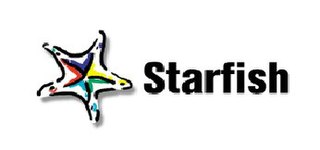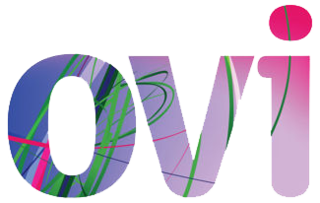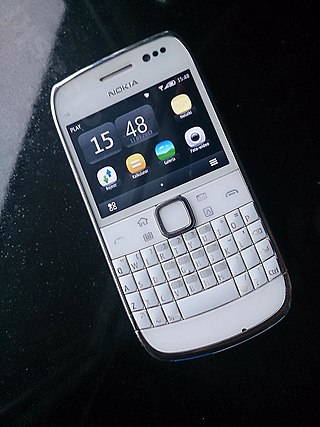
Nokia Corporation is a Finnish multinational telecommunications, information technology, and consumer electronics corporation, established in 1865. Nokia's main headquarters are in Espoo, Finland, in the greater Helsinki metropolitan area, but the company's actual roots are in the Tampere region of Pirkanmaa. In 2020, Nokia employed approximately 92,000 people across over 100 countries, did business in more than 130 countries, and reported annual revenues of around €23 billion. Nokia is a public limited company listed on the Helsinki Stock Exchange and New York Stock Exchange. It was the world's 415th-largest company measured by 2016 revenues, according to the Fortune Global 500, having peaked at 85th place in 2009. It is a component of the Euro Stoxx 50 stock market index.

A personal digital assistant (PDA), also known as a handheld PC, is a multi-purpose mobile device which functions as a personal information manager. PDAs have been mostly displaced by the widespread adoption of highly capable smartphones, in particular those based on iOS and Android, and thus saw a rapid decline in use after 2007.

ActiveSync is a mobile data synchronization app developed by Microsoft, originally released in 1996. It synchronizes data with handheld devices and desktop computers. In the Windows Task Manager, the associated process is called wcescomm.exe.
Push email is an email system that provides an always-on capability, in which when new email arrives at the mail delivery agent (MDA), it is immediately, actively transferred (pushed) by the MDA to the mail user agent (MUA), also called the email client, so that the end-user can see incoming email immediately. This is in contrast with systems that check for new incoming mail every so often, on a schedule. Email clients include smartphones and, less strictly, IMAP personal computer mail applications.

Nokia PC Suite is a discontinued software package used to establish an interface between Nokia mobile devices and computers that run the Microsoft Windows operating system. Its first release was in 1997, originally called Nokia Data Suite. It was replaced by Nokia Suite and integrated into the Ovi service suite.
The Motorola Q is a Windows Mobile smartphone first announced in the Summer of 2005 as a thin device with similar styling to Motorola's immensely popular RAZR. Motorola in a partnership with Verizon Wireless released the Q on May 31, 2006. A version for Sprint was released early in January 2007 and one for Amp'd Mobile in April 2007.

The Nokia E50 Business Device is a bar-style monoblock quad-band smartphone from Nokia announced 18 May 2006 as part of the Eseries, intended primarily for the corporate business market. It includes sophisticated e-mail support for Nokia's Intellisync Wireless Email, BlackBerry Connect, Visto Mobile, Activesync Mail for Exchange, Altexia as well as IMAP4. It also has the ability to view Microsoft Word, PowerPoint, and Excel attachments, and PDF documents but it cannot be used for editing these without additional apps. An application manager downloads, removes and installs both Nokia and third-party applications. Device to device synchronization is possible with Data transfer application. Features include EDGE, Bluetooth 2.0, a 1,280 × 960 pixels (1.3-megapixel) camera, a MicroSD memory-card slot, and digital music and video player functionality through RealPlayer and Flash Player. This unit does not support UMTS, Wi-Fi, or FM radio.

Sybase iAnywhere, is a subsidiary of Sybase specializing in mobile computing, management and security and enterprise database software. SQL Anywhere, formerly known as SQL Anywhere Studio or Adaptive Server Anywhere (ASA), is the company's flagship relational database management system (RDBMS). SQL Anywhere powers popular applications such as Intuit, Inc.'s QuickBooks, and the devices of 140,000 census workers during the 2010 United States Census. The product's customers include Brinks, Kodak, Pepsi Bottling Group (PBG), MICROS Systems, Inc. and the United States Navy. In August 2008.

Starfish Software was founded in 1994 by Philippe Kahn and Sonia Lee, as a spin-off from the Simplify business unit from Borland and Kahn's severance from Borland. It was located in Santa Cruz, California.

Ovi by Nokia was the brand for Nokia's Internet services. The Ovi services could be used from a mobile device, computer or via the web. Nokia focused on five key service areas: Games, Maps, Media, Messaging and Music. Nokia's aim with Ovi was to include third party developers, such as operators and third-party services like Yahoo's Flickr photo site. With the announcement of Ovi Maps Player API, Nokia started to evolve their services into a platform, enabling third parties to make use of Nokia's Ovi services.
Synchronica plc was a public listed software vendor which developed and marketed mobile messaging solutions for mobile network operators and mobile phone manufacturers. Its flagship product provided push email, instant messaging and social networking to a wide range of mobile phones, and was branded as Unity.
RemoSync is a mobile application that provides corporate email, calendar, and contact synchronization for mobile phones capable of running BREW applications. Conceived as a low-cost alternative to BlackBerry or iPhone devices, RemoSync is currently available on the Verizon wireless network.
SEVEN Networks, Inc. is a privately funded American corporation founded in 2000. It had about 265 employees in 2010. As of 2017, the company has research and development centers in Texas and Finland.
Exchange ActiveSync is a proprietary protocol designed for the synchronization of email, contacts, calendar, tasks, and notes from a messaging server to a smartphone or other mobile devices. The protocol also provides mobile device management and policy controls. The protocol is based on XML. The mobile device communicates over HTTP or HTTPS.

GroupWise is a messaging and collaboration platform from Micro Focus that supports email, calendaring, personal information management, instant messaging, and document management. The GroupWise platform consists of desktop client software, which is available for Windows,, and the server software, which is supported on Windows Server and Linux.

The Nokia E6-00 is a smartphone running the Symbian^3 operating system. It supersedes the Nokia E72 as the new Symbian business mobility solution from Nokia following its announcement on 12 April 2011. It shipped with the new "Symbian Anna" version of Symbian^3, and originally retailed for 340 euros before taxes.
Microsoft mobile services are a set of proprietary mobile services created specifically for mobile devices, they are typically offered through mobile applications and mobile browser for Windows Phone platforms, BREW, and Java. Microsoft's mobile services are typically connected with a Microsoft account and often come preinstalled on Microsoft's own mobile operating systems while they are offered via various means for other platforms. Microsoft started to develop for mobile computing platforms with the launch of Windows CE in 1996 and later added Microsoft's Pocket Office suite to their Handheld PC line of PDAs in April 2000. From December 2014 to June 2015, Microsoft made a number of corporate acquisitions, buying several of the top applications listed in Google Play and the App Store including Acompli, Sunrise Calendar, Datazen, Wunderlist, Echo Notification Lockscreen, and MileIQ.
MailSite is a commercial mail server, calendar software, contact manager and collaborative software that was developed by Rockliffe Systems. It was one of the first mail servers to run on Windows NT using Internet standards when version 1.2 was released in 1996. Additionally, MailSite has been in continual development since 1996 with version 10 released in 2013, and runs on a single Windows Server as well as on a cluster of Windows Server computers. MailSite works natively with Microsoft Outlook versions 2007 to 2013 for mail, calendar and contacts without requiring any Outlook plug-ins, as well as including an Exchange ActiveSync (EAS) server for synchronizing mail, calendar and contacts with mobile devices. MailSite also works with Internet Standards-based mail clients such as Mozilla Thunderbird.
Nokia is a Finnish multinational corporation founded on 12 May 1865 as a single paper mill operation. Through the 19th century the company expanded, branching into several different products. In 1967, the Nokia corporation was formed. In the late 20th century, the company took advantage of the increasing popularity of computer and mobile phones. However, increased competition and other market forces caused changes in Nokia's business arrangements. In 2014, Nokia's mobile phone business was sold to Microsoft.








